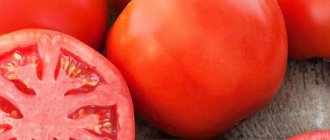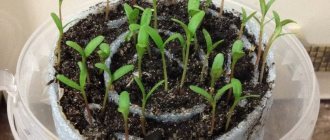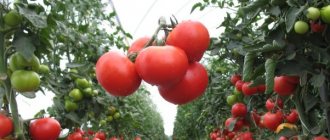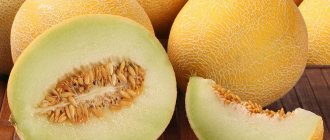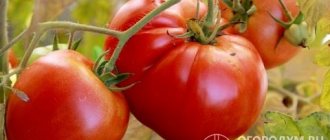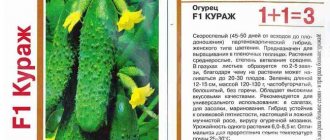In their natural environment, tomatoes grew widely in South America and were even used by local Indian tribes as a domestic crop from around the 7th or 8th century AD.
Today, tomatoes have spread all over the world, and, thanks to the development of a large number of varieties, they are grown even in climates that are not the most favorable for them: for example, in Russia.
Europeans began to use tomatoes for food relatively late - only in the 19th century. Since then, tomatoes have entered the traditional cuisine of most peoples and countries. Of course, such popularity did not appear just like that.
People appreciated the versatility of tomatoes, the ability to eat them both raw and dried, fried, baked. And in all cases, the fruits acquire a special, unique shade of tastes and smells.
Among other things, the composition of the tomato is especially valuable. It contains vitamins in sufficient quantities (for example, in terms of vitamin C, tomatoes are comparable to lemons and oranges), and the optimal balance of nutrients helps the body to be in good shape and prevent the development of many diseases, including dangerous ones.
Why is a cucumber not a berry?
Cucumber is perhaps the most common vegetable crop in our areas. Meanwhile, a cucumber, like a watermelon and pumpkin, is not a vegetable at all, but a berry. Botanists call them false berries. ... It emphasizes that the cucumber is consumed unripe.
Interesting materials:
Is it possible to eat fried fish while dieting? Is it possible to eat live grasshoppers? Is it possible to eat scrambled eggs every day? Is it possible to eat oatmeal cookies every day? Is it possible to eat bread at night? Is it possible to go to the bathhouse immediately after eating? Is it possible to feed a sterilized cat human food? Is it possible to feed a cat homemade food? Can cats eat human food? Can cats eat arugula?
Tomatoes. Botanical description
Tomato bush
Tomatoes are a herbaceous plant belonging to the nightshade family, widely used for cultivation as an agricultural crop.
Tomato fruits are considered berries, although in the world there are a lot of prejudices and even official data regarding the classification of tomatoes as vegetables or even fruits. In general, the debate is still ongoing.
Modern varieties (and there are more than 10,000 of them) differ:
- by shape (fruits are round, oval (elongated, flattened), heart-shaped);
- color (fruits are red, pink, burgundy, purple, yellow, orange, black);
- weight (varieties from 20 g to 1-1.5 kg);
- surface of the fruit (smooth, weakly, medium and strongly ribbed);
- ripening period (ultra-early, early, mid-early, late).
The root system of tomatoes is a classic taproot with a vertical or lodging arrangement in the upper layers of the soil. Small hairs extend from the main root shoots.
The leaves are arranged in strict order and consist of lobes.
The emerging inflorescences can be either simple or few- or multi-complex.
Fruits - berries - form on tomato bushes. Small, kidney-shaped seeds are concentrated in them closer to the core.
BY THE WAY. Tomatoes have one of the longest periods of seed germination. Under favorable conditions, they can maintain high germination even after 5-7 years.
Features of care
Caring for tomatoes is practically no different from any other crop. But there are, of course, some peculiarities.
Seedling
Tomato seedlings
For the most part, only in the south of Russia will it be possible to grow tomatoes without seedlings. In the rest of the area, you will have to first plant seedlings, and then, when conditions permit, transplant the plants into open ground or into a greenhouse.
The technology, developed over the years, involves planting tomato seeds in early or mid-March.
The approximate time for transplanting to open areas is 55-60 days after planting the seeds. In fact, this time falls around mid-May.
Tomato seedlings require standard care. As it grows, it needs to be discharged, fed, watered 3-4 times a week, and 1-2 weeks before transplantation, hardening should begin by taking the dishes with tomatoes out into the open air (first for 1-2 hours, and closer to transplantation - for a whole day and night).
Watering
Tomatoes are southern plants that love moisture. Therefore, you will have to be careful about watering this crop.
The most important rules: do not allow the top layers of soil to dry out, but also do not flood the crop, otherwise rotting will begin and pests will infest.
The optimal procedure is to water once every 3-5 days and periodically loosen the soil. The water should be warm.
Feeding
Tomatoes grow best in rich soils, such as black soil. The optimal combination is approximately equal proportions of chernozem, peat and humus.
Don’t forget about fertilizing tomatoes. It is best to alternate superphosphate fertilizers with organic ones. Between periods of fertilizing, 10-14 days of breaks should be maintained, and feeding can begin immediately from the moment of planting on the beds.
Stepsoning
Stepping
One of the most important conditions for obtaining a rich harvest of tomatoes is the removal of some shoots. Stepchildren should be removed before they reach 5 cm in length. Otherwise, you can harm the bush.
Those shoots that do not have ovaries are removed, otherwise they will simply take away the plant’s excess strength, preventing it from forming higher-quality fruits. You can also separate the lower leaves from the trunk.
Pests and diseases
In terms of immunity, all nightshades can hardly boast of strong protection against common pests and diseases. Therefore, tomatoes are especially susceptible to rot and blackleg. Among the pests that bushes can choose: aphids, Colorado potato beetles, beetles, mole crickets, nematodes, wireworms.
Control methods are standard, as for any other garden crop. It is better to prevent tomato diseases than to treat them. Most of them develop due to excessive dampness or are viral in nature.
You will have to fight pests either with purchased insecticides, or give preference to softer, but practically harmless to human health, folk methods.
Vegetable that is a fruit
Tomatoes are a fruit and part of the Nightshade family (like potatoes and eggplants), but they are served and cooked like vegetables, which is what most people are used to calling them. Tomatoes come in different colors, shapes and sizes:
- large red and slightly uneven;
- red, medium size and round;
- ovoid tomatoes, red or yellow;
- cherry tomatoes, small and round, etc.
There are many hybrid varieties that are not so widespread; in addition to the usual colors, there are green, purple and even striped tomatoes. Black tomatoes were grown for the first time in the UK. This unusual fruit contains large amounts of anthocyanins and antioxidants, which are believed to help fight cancer, diabetes and obesity.
It is not so important whether a tomato is a berry or a vegetable; what is more important is the positive effect this fruit can have on the human body. Tomato consumption has long been linked to heart health
Fresh tomatoes and tomato juice help lower cholesterol levels and also reduce the risk of cardiovascular disease (atherosclerosis). Thanks to its unique properties, the tomato will always be at the top of the list of tasty, healthy, nutritious and wholesome foods.
Historical information
The tomato was first grown in South America. Wild varieties can still be found here today. Semi-cultivated varieties also grow here. In the 16th century, tomatoes came to Portugal, Spain and other European countries. The literal translation of the plant’s name sounds like “golden apple.” At first it was bred for decorative purposes. For the first time, adding fruits to a dish began in Spain.
According to other sources, Peru is considered the birthplace of the tomato. There is a theory that their homeland is Mexico. Here they grew wild, and later, in the 16th century, they began to be grown as cultivated plants. Tobacco came to Russia in the 18th century. It was brought here from Romania and Turkey. But the Russians at first did not know that the rich red fruits could be eaten. This probability was first proven by the famous agronomist A. Bolotov. Before this, there was an opinion that they were supposedly poisonous. The crop began to be planted in Crimea.
In 1780, the tomato was served at the table of Catherine II. In remote areas of the empire it was already being grown with might and main. It was widespread in Crimea, Georgia and Astrakhan. The head of state was presented with a tomato that was brought from Rome. In the northern regions, it was perceived as a decorative crop and was not eaten.
When do tomatoes ripen?
Green and ripe tomatoes
The ripening of tomatoes directly depends on the prevailing weather, as well as the time of planting the crop. The further north the region, the later you need to plant tomato seedlings and the longer it will take for the bushes to produce a harvest.
The optimal conditions for planting tomatoes in open areas can be considered an air temperature of +15-20 degrees, and warming up of the soil to at least +10-12 degrees. In most of Russia this time falls at the end of May-beginning of June. If we are talking about planting in a greenhouse, then the timing is slightly advanced: to mid-to-late April, when the tomatoes will have enough sun.
Early varieties are the first to bear fruit in temperate climates. Tomatoes are harvested from them already in mid-July. For Siberia and the Urals, the deadlines are moving to the beginning of August.
Late varieties usually ripen by mid-August, and in continental climates beyond the Ural Mountains may require an additional 2-3 weeks.
INTERESTINGLY , the ripening time of tomato fruits strongly depends on the planting area. So, as you move from south to north, the growing season extends. The same variety in a warm southern region can ripen faster than in a temperate climate, by 2-3 weeks.
In Siberia and the Urals, for the first time after planting, it is advisable to “insulate” fragile tomato bushes. Experienced gardeners use tops, film, and plastic buckets and bottles for this purpose.
Use in cooking
Tomatoes have spread so widely throughout the world that many popular dishes today simply cannot be imagined without their use. For the most part, tomatoes are used to make seasonings. Suffice it to recall, for example, the familiar ketchup.
It's hard to imagine pizza without tomatoes. Moreover, both the classic Italian recipe and the more modern, most common version of American pizza in the world.
Fresh tomatoes are used in many salads. Interestingly, they can be used both in composition with other vegetables, and without adding a large number of ingredients, being the central component of the dish.
Tomatoes are also used:
- In fast food.
- In soups of different nations of the world.
- With spaghetti or pasta.
- With scrambled eggs, in an omelet.
- For countless salads.
- In baked dishes with meat, potatoes, rice, fish.
- For preparing simple sandwiches and sandwiches.
- In fresh condition.
- Pickled, canned.
Classification and types
Variety of tomato varieties
All tomato varieties are divided into several classifications and types.
It is accepted to classify:
- according to the height of the bushes;
- by fruit ripening.
So, all known varieties of tomatoes are divided into:
- Determinate varieties . Such tomatoes are often used in central Russia, since their growth is limited to the formation of 4-6 clusters, that is, they quickly begin to form ovaries and fruits and rarely exceed 1 m in height. Determinate tomatoes are mid-season varieties, so they begin to produce crops in early to mid-August. These tomatoes need to be pinched and tied up.
- Semi-determinate varieties . They form fairly tall bushes, up to 1.5 - 2 m. Their distinctive feature is a large number of inflorescences on the bush, up to 9 - 12. Fruits are formed on them, which begin to ripen at approximately the same time. This means that the main feature of such varieties is high yield. But in this case, tomatoes definitely need to be tied up, and in most of Russia they need to be grown exclusively in greenhouse conditions.
- Indeterminate varieties. Another variety for planting in a greenhouse. Their growth is practically unlimited, so planting tomatoes and installing supports is an important condition for proper cultivation. Basically, the variety is used for commercial purposes, since with good care the fruits are laid almost throughout the entire growth of the tomato. Each bush can contain up to 50 brushes. But such tomatoes ripen 1.5 - 2 months later than the earliest varieties, that is, towards the end of summer.
- Superdeterminate varieties. The main feature of such tomatoes is their low bushes, which bear 4-5 ovaries. The harvest on them is formed almost at the same time, but the key characteristic of the varieties is the earliest ripening of the fruits, usually already in July.
- Standard varieties. These are the tomatoes that are sometimes called “for the lazy”. They are very unpretentious in terms of care, do not require pinching, and the thick stem allows you to not even tie up the bushes as they grow. The height of the bushes usually does not exceed 40 - 60 cm. Compact ovaries are formed on them. The only peculiarity is that each bush needs to be planted at a relative distance from each other, since for proper growth a tomato needs a free area around it of at least 0.5 m2.
According to ripening time, tomatoes are usually divided into:
- Ultra-early ripening . Rare varieties, planting of which is not particularly practiced in Russia. The peculiarity of these varieties is that tomatoes ripen already 80-85 days after the sprout appears from the seed. But for growth to occur, ideal conditions must be observed, which are extremely difficult to reproduce in open areas and even in greenhouses in Russia.
- Early ripening . These varieties can be used in the southern regions, in most areas of temperate climate, as well as north of Moscow. Tomatoes ripen 90-100 days after the first shoots appear. Therefore, early ripening varieties are ideal where summer and sunny days are short.
- Mid-season varieties are another very popular variety of tomatoes, which are distinguished by an excellent combination of both taste and keeping quality. They require more sun and light than early-ripening varieties; they ripen 100-115 days after germination. But they have a good harvest, and they are equally easy to grow both in greenhouses and in open areas.
- Late ripening tomatoes. These are varieties that need a lot of time to sprout shoots, ovaries, and then begin to bear fruit. They usually produce the first harvests 120-130 days after germination. Late-ripening tomatoes are rarely planted in open ground, as unexpected frosts can ruin all efforts. But in greenhouses they produce an abundant and high-quality harvest.
There are many types of tomatoes developed around the world. The differences can be very different.
Differences in tomato varieties
By fruit color:
- Reds.
- Yellow.
- Orange.
- Black.
- White.
According to the purpose of cultivation:
- For fresh consumption.
- For winter storage.
- Decorative.
- Universal.
According to fruit shape:
- Round.
- Oval.
- Ribbed.
- Heart-shaped.
By weight. The most famous of them:
- Small cherry tomatoes.
- Bull's heart.
- Large beef tomatoes (about 150 gr.).
Marching around the planet
From America to Europe, the “golden apple” came to the Iberian Peninsula. The date of appearance of tomatoes is another mystery: according to some sources, the plant came to Portugal with the ships of Columbus in 1498, according to others, it was brought as an ornamental crop by the conquistador Fernando Cortes in 1519.
Europeans for a long time grew a plant that was considered poisonous. The leaves of the plant were used to repel midges, mixtures were prepared from the berries to heal ulcers, and the squeezed juice was used to get rid of stomach diseases. Cases of medical use are described in Tournafort’s book “The Complete Herbal” (published in 1719).
In the middle of the 16th century, the first publication of a botanical description of the plant had already appeared, and in the Naples edition of a cookbook in 1692 there was a recipe for a dish using “golden apples.”
For a long time, tomatoes were considered poisonous in North America. There is a fact of an attempt on the life of George Washington using red berries.
The English Encyclopedia Britannica states that eating tomatoes became commonplace at the end of the 18th century.
In the 1811 edition of the Botanical Dictionary one can find: “the tomato is considered poisonous. But in Italy it is used with pepper, garlic and oil, and in Portugal it is used to make juices with a pleasant sour taste.”
In the late eighteenth and early nineteenth centuries, tomatoes began to be considered vegetables, starting to be sold on the Paris market in 1793. At the beginning of the 19th century, the tomato returned to its homeland with settlers - the American continent greeted it as a cultivated vegetable.
Nutritional value and composition
Tomato is a dietary food product.
Tomatoes are an almost indispensable product for dietary nutrition. Despite the fact that the leader in water content is the cucumber, the tomato is not much inferior to it (about 94-95 grams per 100 grams of weight).
Another characteristic that is especially valuable for adherents of dietary nutrition is the absence of fat and cholesterol in tomatoes . At the same time, the natural antioxidants contained in the composition help remove excess fats and cholesterol from the body. The second most important positive effect of antioxidants is their very effective prevention of the development of cancer cells.
Vitamins and nutrients from tomatoes are best absorbed by the body if they are consumed raw, in combination with oils (olive, vegetable). But at the same time, the tomato is that rare fruit that retains its beneficial properties during heat treatment , and sometimes even improves its unique qualities.
Nutritional value of tomatoes (per 100 grams of product)
| Compound | Red tomatoes | Yellow tomatoes |
| Water, gr. | 94,52 | 95,28 |
| Fats, gr. | 0,2 | 0,28 |
| Squirrels, gr. | 0,88 | 0,98 |
| Carbohydrates, gr. | 3,89 | 2,98 |
| Acids of organic origin, gr. | 0,6 | 0,6 |
Content of key nutrients in tomatoes
Vitamins (per 100 g of product)
| Compound | Red tomatoes | Yellow tomatoes |
| A (Carotene), mgr. | 0,45 | 0,00 |
| B1 (Thiamin), mgr. | 0,037 | 0,04 |
| B2 (Riboflavin), mgr. | 0,019 | 0,047 |
| C (Ascorbic acid), mgr. | 13,70 | 9,00 |
| E (Tocopherol), mgr. | 0,54 | 0,00 |
Micro- and macroelements (per 100 grams of product)
| Compound | Red tomatoes | Yellow tomatoes |
| Potassium, mgr. | 237,00 | 258,00 |
| Phosphorus, mgr. | 25,00 | 36,00 |
| Calcium, mgr. | 9,00 | 11,00 |
| Sodium, mgr. | 6,00 | 23,00 |
| Magnesium, mgr. | 10,00 | 11,00 |
| Iron, mgr. | 0,26 | 0,49 |
| Zinc, mgr. | 0,18 | 0,28 |
| Manganese, mgr. | 0,11 | 0,11 |
| Fluorine, mgr. | 0,02 | 0,02 |
| Iodine, mgr. | 0,002 | 0,002 |
| Bor, mgr. | 0,11 | 0,11 |
Interesting Facts
- Surely many remember from school that tomatoes were brought to Europe from America. This happened only in the 16th century. In general, people have been growing this vegetable as a useful crop since about the 7th century. The Indians called tomatoes very similar to the modern name - “tomatl”. This roughly translates to "big berry".
- It is interesting that the enlightened public for a very long time considered tomatoes to be a poisonous plant (perhaps they were repelled by their bright red color) and were afraid to even touch the fruits. It was possible to convince the broad masses only at the beginning of the 19th century, when, according to legend, Colonel Robert Gibbon Johnson ate a whole bucket of tomatoes in front of a crowd of onlookers and, naturally, remained alive.
- To date, about 10,000 different varieties of tomatoes have been bred. The size of the fruit ranges from 2 cm in diameter to 1.5 kilogram giants.
- There is still ongoing debate about what tomatoes are. Botany classifies them as berries. In Russia and America they are usually called vegetables (surprisingly, in the USA this is even a court decision). Although they appear from seeds, eating them raw played a role. In Europe, since 2001, it was decided to call tomatoes fruits.
- If we classify tomatoes as a fruit, they are the leaders in the world in terms of annual harvest - 60 million tons. In second place are bananas (44 million tons), in third place are apples (36 million tons). The largest number of tomatoes is produced in China - about 16% of global volumes or more than 10 million tons. in year.
- Tomatoes have no cholesterol at all, and also contain the substance lycopene, which the human body does not receive from anywhere else. Lycopene is a natural antioxidant, so it is a good preventative against the growth of cancer cells.
- Tomatoes also contain a lot of serotonin, or, as it is also called, the “happiness hormone.”
- Tomato is one of the few vegetables that not only retains its beneficial properties during heat treatment, but sometimes even increases them. It is known that the amount of picotine doubles when cooked for 2-3 minutes, and lycopene - by 1/3.
- Low temperatures, on the contrary, are harmful to tomatoes. Therefore, it is not recommended to store them in the refrigerator, but it is better to give preference to places with room temperature. But in this case, obviously, the vegetables will not last long.
- Phytoncides contained in tomatoes are substances that prevent the development of infections. That is why many folk recipes for using tomatoes involve treating wounds, burns, and other skin injuries.
- Buñol, a city in Spain, is famous for its tomato festivals, which are held every year in the last week of summer. The city is literally drowning in tomato juice as people throw freshly picked tomatoes at each other like snowballs.
- Today, tomatoes are used not only for growing vegetables for food, but also as a decorative decoration for plots. As a rule, for such purposes, varieties are chosen that bear fruit of medium-sized tomatoes of the same size.
How to store fruits?
Storing tomatoes
Tomatoes should be removed from the bush gradually as they ripen. But if the air temperature drops below +10-12 degrees, then it is recommended to harvest the entire crop and leave the unripe fruits to ripen in a warm place. If this is not done, many tomatoes may turn black.
There are several rules for storing tomatoes:
- Fruits picked ripe should be eaten as quickly as possible. It is advisable to do this within 3-4 days from the date of cleaning. In this case, it is better to store tomatoes at a temperature slightly below room temperature.
- If tomatoes need to ripen, then it is better to place them in a dry room with sufficient ventilation: for example, in a cellar. The main thing is to prevent the fruit from rotting. Therefore, in order to limit the spread of possible rot, it would be a good idea to place the tomatoes in sawdust or dry sand.
In general, it is not recommended to store tomatoes at temperatures that are too cold. It is believed that this significantly reduces their beneficial qualities for humans.
Beneficial features
A tomato consists of 95% water
. Like many vegetables, tomatoes have a large supply of vitamins, micro and macroelements beneficial to the human body. At the same time, the tomato consists almost entirely of water (95% of its weight), and in 100 g. contains no more than 20-22 kilocalories.
In terms of vitamin C content, tomatoes are quite close to citrus fruits, which are known to be especially rich in this vitamin. Tomato also contains vitamins A, B, and E.
Other beneficial substances that tomatoes are especially rich in:
- Copper is the primary assistant in the prevention and fight against nervous disorders, joint dysfunctions, and chronic ailments.
- Iron helps to better absorb oxygen and also has a beneficial effect on blood circulation.
- Iodine – starts the process of burning excess fat in the body, improves the elasticity of the walls of blood vessels, and is invaluable for the thyroid gland.
It is known that, among other things, tomatoes are considered very healthy for the heart. They are an excellent alternative to fatty foods for those groups of people who need to follow a diet (those simply losing weight, as well as those with diabetes, hepatitis).
Tomatoes do an excellent job of increasing immunity, so they are recommended to be consumed during the cold season, during the peak incidence of viral infections.
The effect of tomatoes on women's health
For women, tomatoes can be an indispensable product for anemia, as well as a lack of hemoglobin in the blood.
Vitamin E, contained in fresh tomatoes in sufficient quantities for humans, is an excellent means of preventing the development of various cervical diseases.
Only fresh tomatoes (preferably grown without the use of pesticides) are often recommended for pregnant women. In addition to the optimal ratio of vitamins in them, the properties of the vegetable can improve blood circulation, saturate the blood with oxygen, which will have a beneficial effect on the development of the child.
On the other hand, it is not recommended to eat too many tomatoes. The presence of a large amount of acids in the vegetable can provoke spasms of the gallbladder and simply gastrointestinal disorders. Therefore, the daily norm should not exceed 200 grams. tomatoes in the diet. For pregnant women, it is better to reduce this figure to 100 grams. for 2-3 days.
Tomatoes for men's health
Tomatoes also have a good effect on men's health. In particular, they have a beneficial effect on the prostate gland, not only reducing inflammatory processes, but even acting as a preventive measure for the development of cancer. The most important role in this is played by the presence of iodine in tomatoes, which affects the functioning of the thyroid gland and the production of hormones.
Vitamin C, which, as has already become known, is slightly less rich in tomatoes than lemons and oranges, helps remove toxins from the body. This is especially true for those men who associate or have long associated their lives with hazardous production.
INTERESTINGLY , both fresh tomatoes and sun-dried, salted ones are equally beneficial for men.

